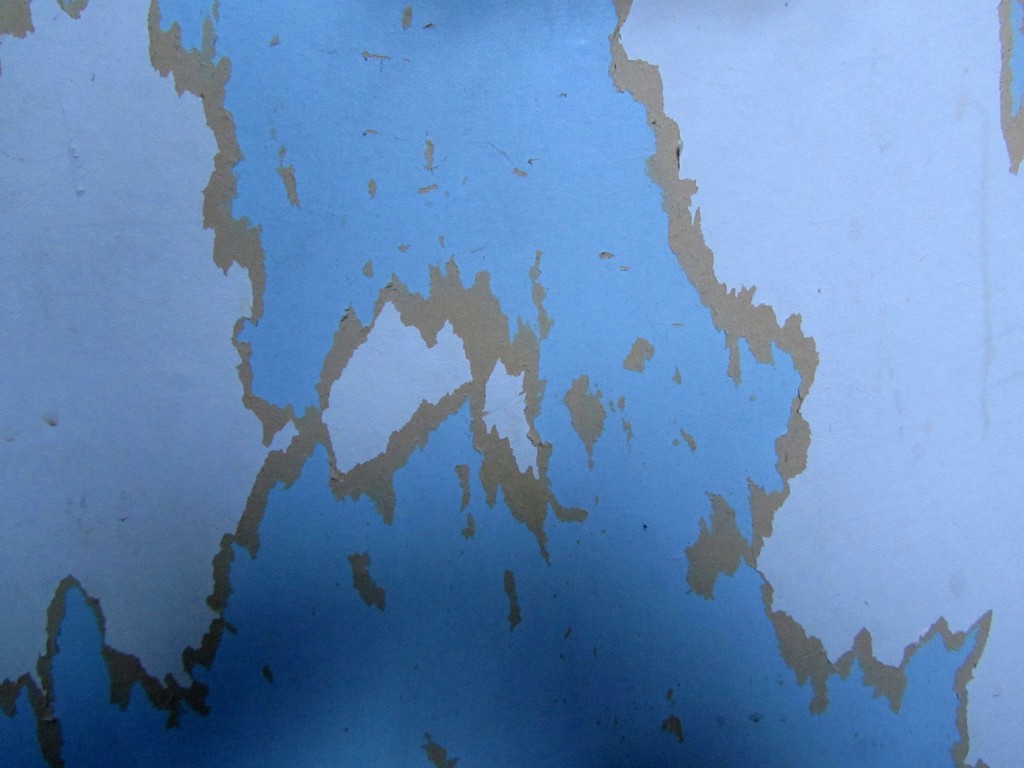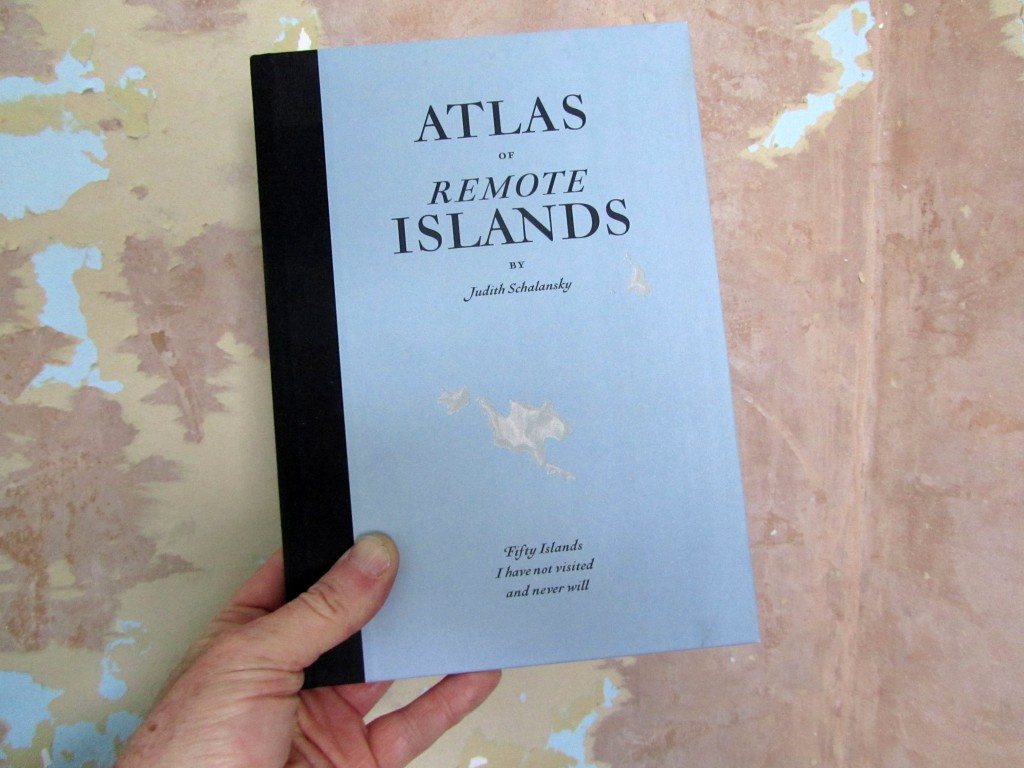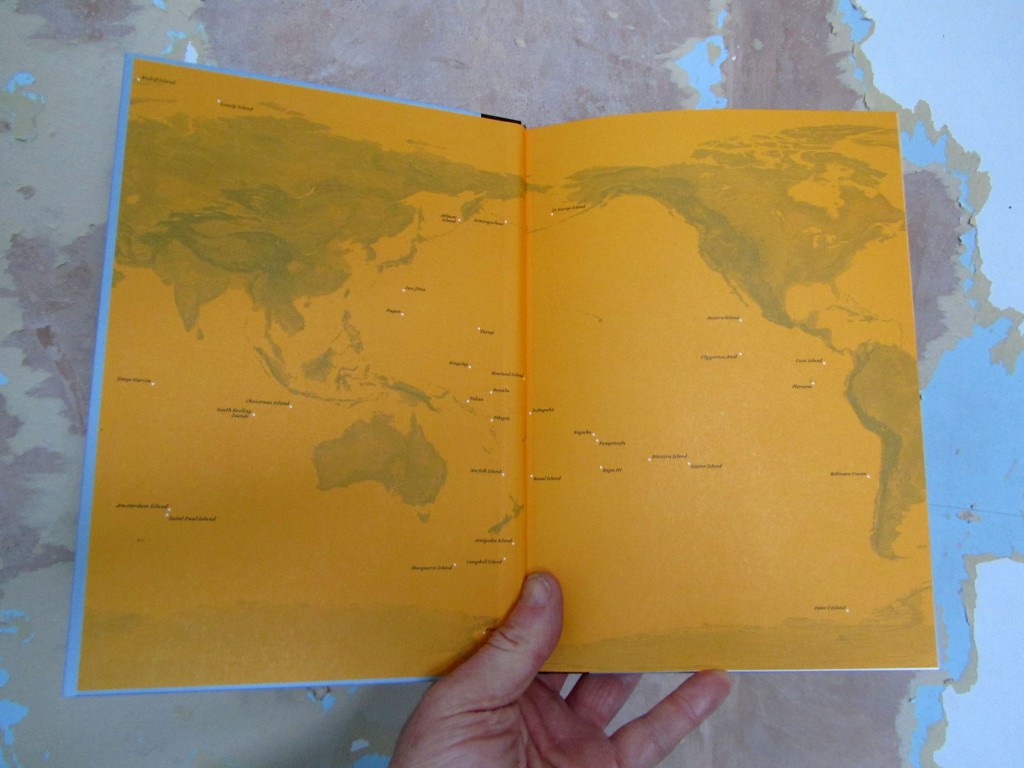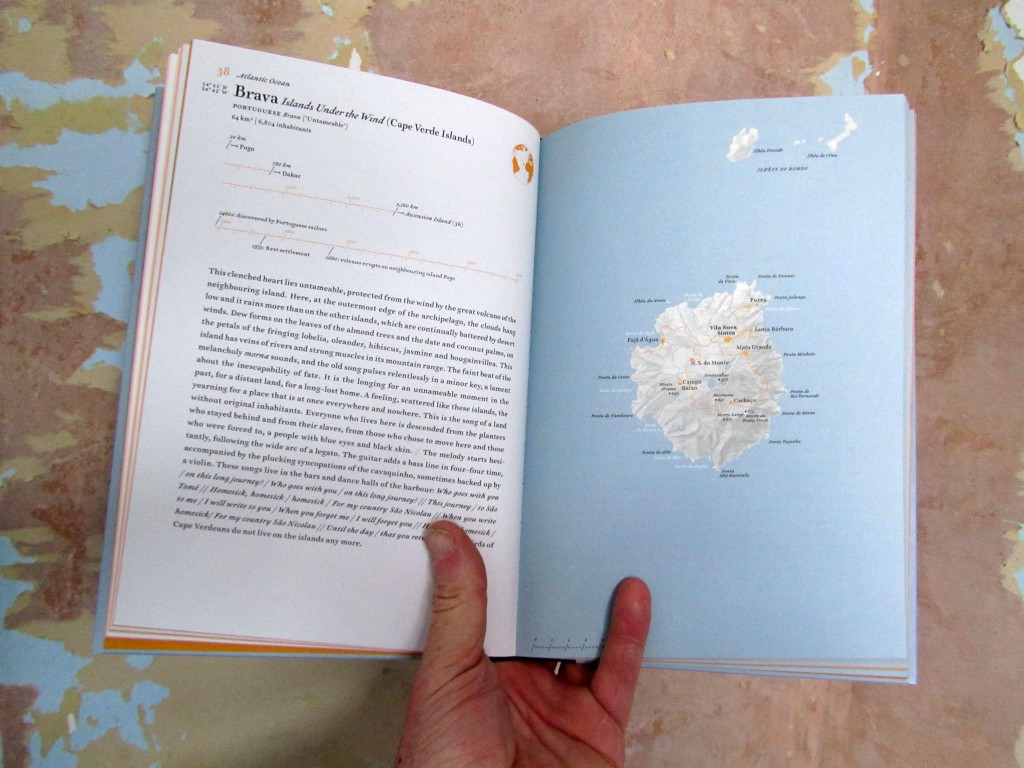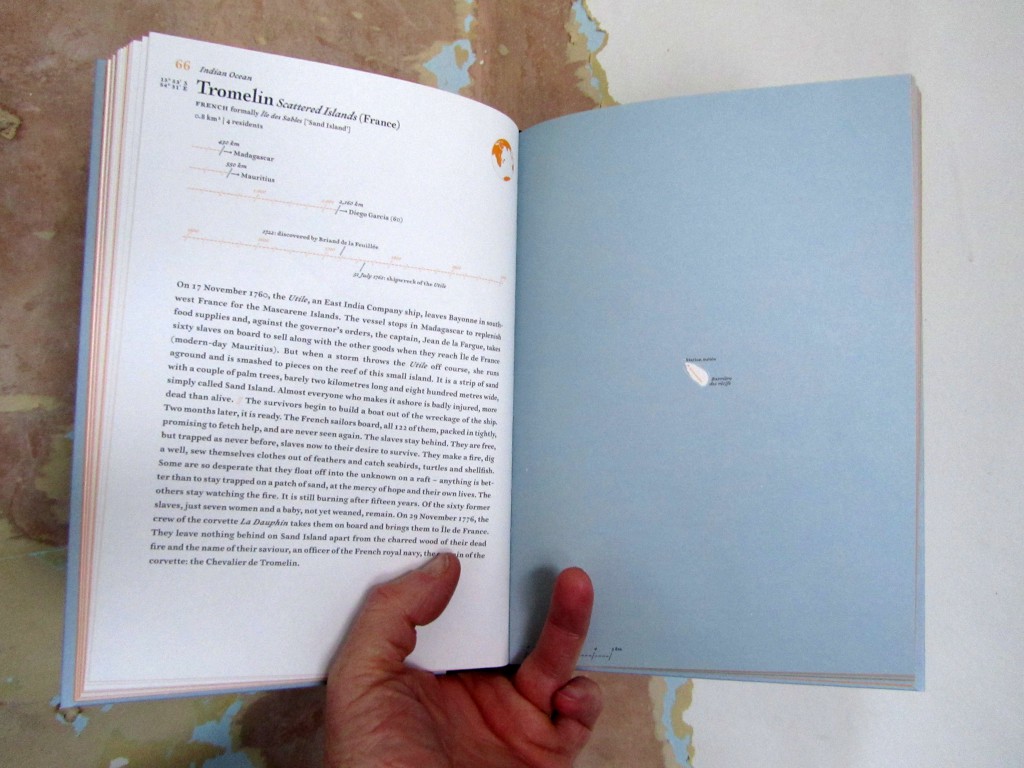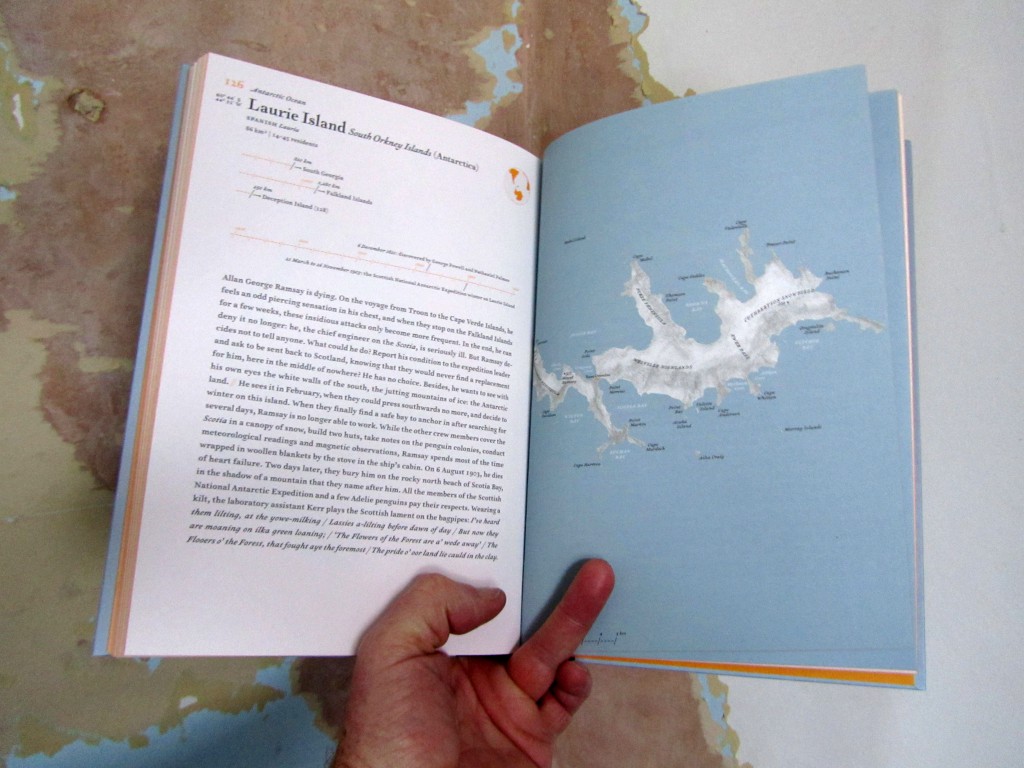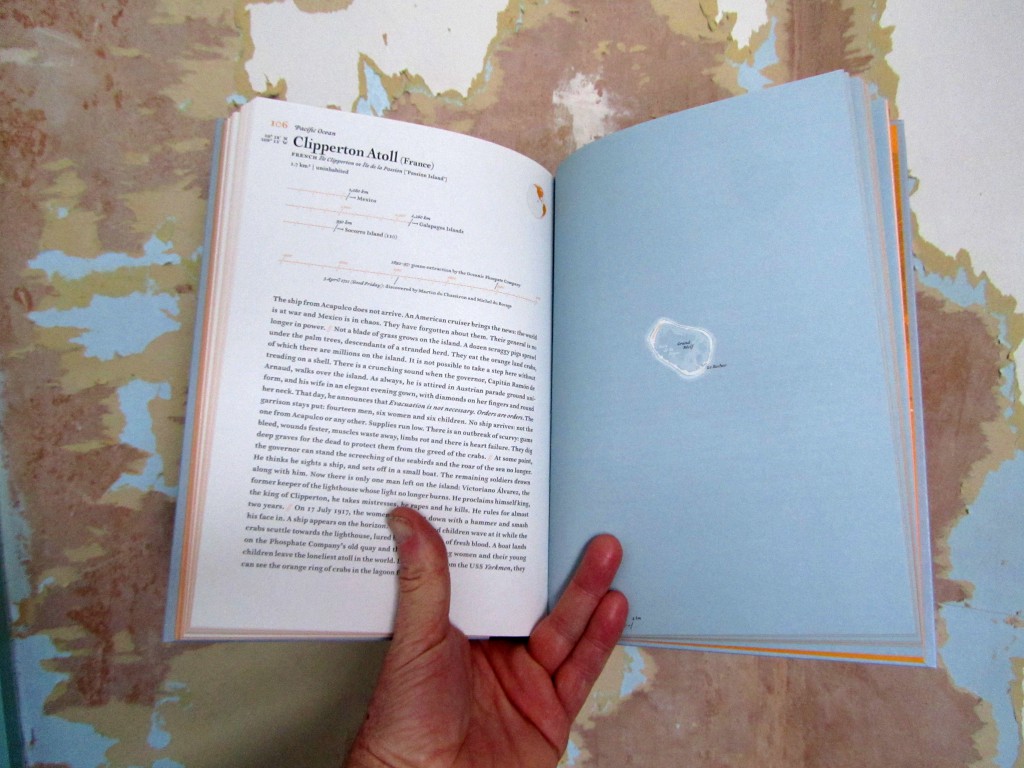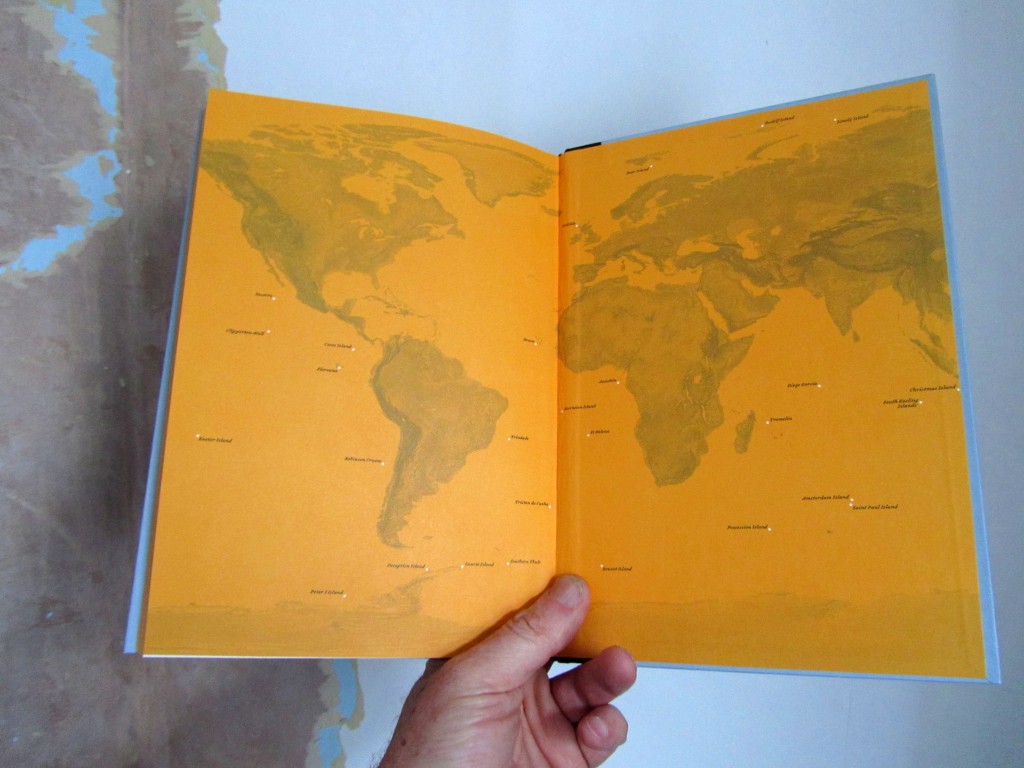At home we just had builders and decorators in the house. They tore down ceilings and knocked down walls. We were reduced to a couple of rooms for a while and to escape the dust and the mayhem I discovered desert islands in the peeled wallpaper.
Archipelagos appeared as the surface of the present was eroded and overwhelmed by freshly revealed traces from the past. New coastlines were formed, new borders drawn, new international treaties signed. Some islands were so reduced in size that they were no longer able to support their inhabitants, and they sunk under the weight. Some islands could no longer entertain their inhabitants who died of boredom. Some islands were heart-shaped and encouraged peace, love and understanding. Some islands were uninhabited and some were uninhibited and some just floated away.
All this indoor travelling reminded me of Judith Schalansky’s beautiful book for armchair explorers.
She pairs an island map on the right hand with a cryptic tale on the left hand. A flight of fancy to occupy a deadpan depiction.
Geographical maps are abstract and concrete at the same time; for all the objectivity of their measurements, they cannot represent reality, merely one interpretation of it.
I imagined that the cartographer must have had to sketch this island, before he tried his hand at the mainland. It struck me for the first time that islands are in fact small continents, and that continents are in turn no more than very large islands. This clearly outlined piece of land was quite perfect and yet lost at the same time, like the loose sheet of paper on which it had been drawn. Every connection to the mainland had been lost. There was no mention of the rest of the world. I had never seen a lonelier place.
In the days that followed, the flood waters subsided and the islands became reunited with the mainland. The ceiling was re-plastered and the walls re-papered. Harmony was restored across the land and Cosmo rediscovered the kitchen of his dreams.
Judith Schalansky / Atlas Of Remote Islands



